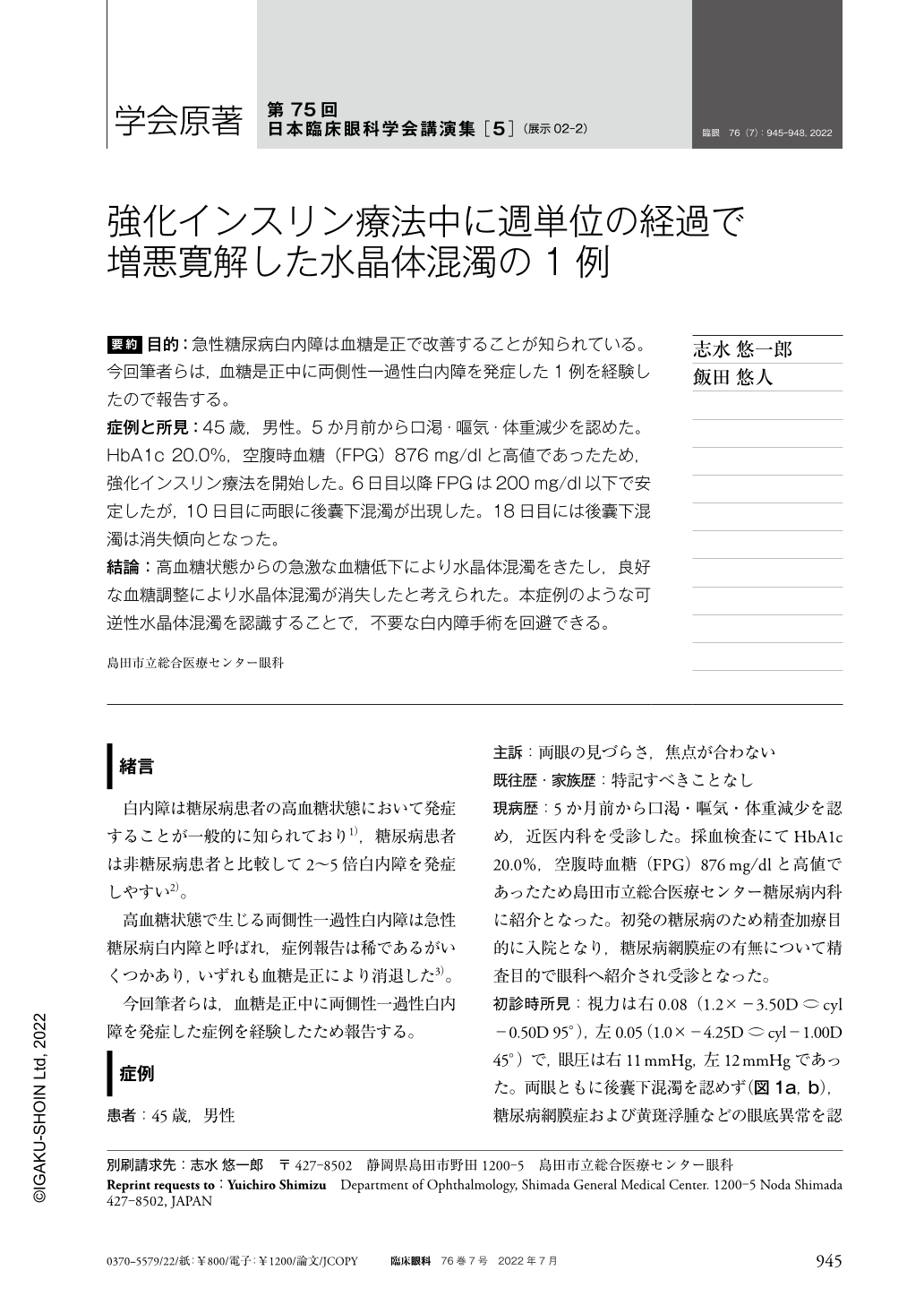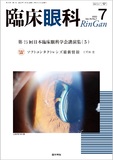Japanese
English
- 有料閲覧
- Abstract 文献概要
- 1ページ目 Look Inside
- 参考文献 Reference
要約 目的:急性糖尿病白内障は血糖是正で改善することが知られている。今回筆者らは,血糖是正中に両側性一過性白内障を発症した1例を経験したので報告する。
症例と所見:45歳,男性。5か月前から口渇・嘔気・体重減少を認めた。HbA1c 20.0%,空腹時血糖(FPG)876mg/dlと高値であったため,強化インスリン療法を開始した。6日目以降FPGは200mg/dl以下で安定したが,10日目に両眼に後囊下混濁が出現した。18日目には後囊下混濁は消失傾向となった。
結論:高血糖状態からの急激な血糖低下により水晶体混濁をきたし,良好な血糖調整により水晶体混濁が消失したと考えられた。本症例のような可逆性水晶体混濁を認識することで,不要な白内障手術を回避できる。
Abstract Purpose:Acute diabetic cataract can be improved by blood glucose contorol. We report a case of binocular transient cataract during blood glucose control.
Case:A 45-year-old man presented with a 5-month history of dry mouth, nausea, and weight loss.
Findings:His blood test results were as follows:glycosylated hemoglobin(HbA1c)20.0%;fasting plasma glucose(FPG)876 mg/dl. He started insulin-enhanced therapy. After the 6th day, FGP stabilized at 200 mg/dl or less, but on the 10th day, posterior subcapsular opacity appeared in both eyes. On the 18th day, the posterior subcapsular opacity tended to disappear.
Conclusions:It was considered that the lens opacity occurred due to a rapid decrease in blood glucose from the hyperglycemic state, and that the lens opacity disappeared due to good blood glucose regulation. By recognizing reversible lens opacification, as in this case, unnecessary cataract surgery can be avoided.

Copyright © 2022, Igaku-Shoin Ltd. All rights reserved.


